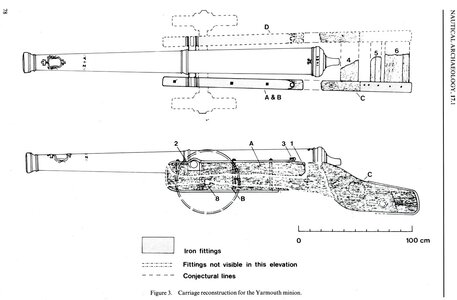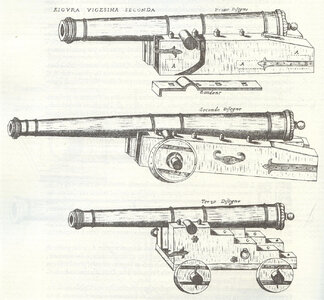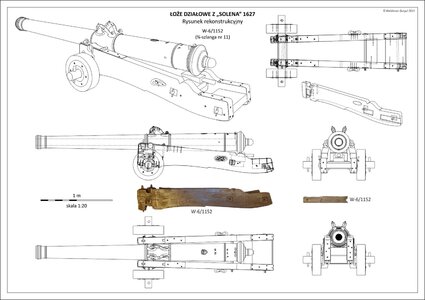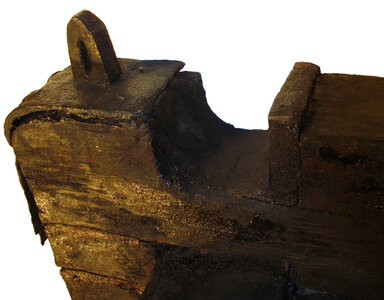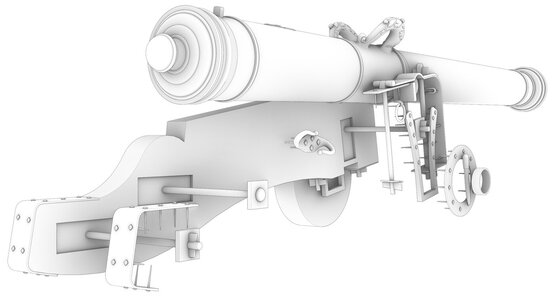I was sent this picture from someone who made a 3D model of it. I know I've seen it before, but I can't seem to find a clearer version, or one in English:

A very similar gun is shown on the Reconstruction of a 16th Century Portuguese Nau:
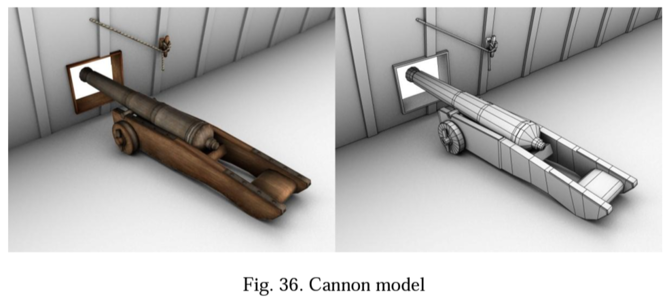
but no mention is made of its size, name or description. This is one reason I thought this would be a good model to start with.
I am trying to determine the approximate size (barrel length, bore, pounds) and get other information to see if it would be a reasonable gun to use on the quarterdeck of the Ragusian Carrack I am building. It has much in common with the guns included with the kit:
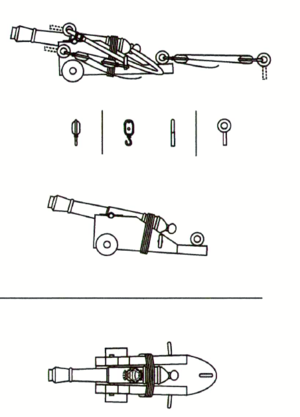
Searching for Columbrina, I've also found the following similar designs:
A Pocher kit in 1:20 scale:
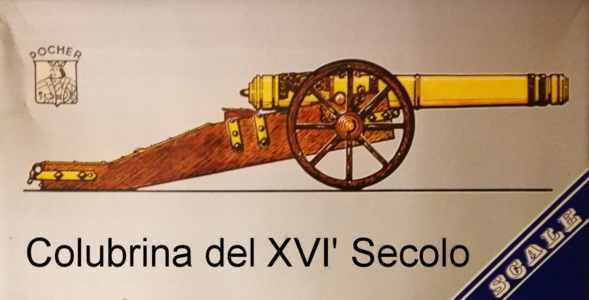
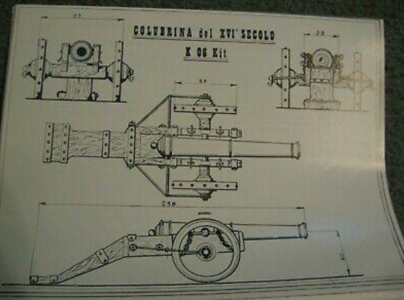
I can't make out most of the dimensions, but I believe the OAL is 238 cm (I assume - just under 8'), although it looks more of a land operated gun.
Another photo of a model:
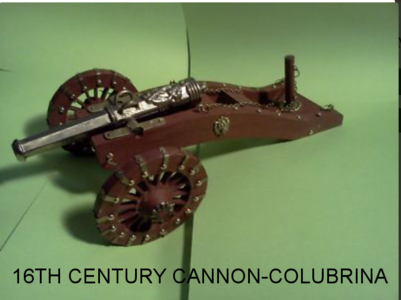
From Wikipedia:
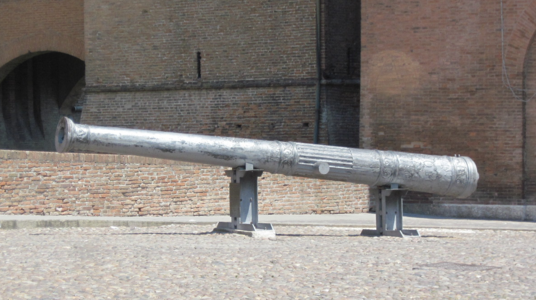
culverin of the century. XVI cast by Annibale Borgognoni for Ercole II d'Este, Duke of Ferrara, in 1556
The above picture is also shown on this web site and has the following description:
It is a faithful, life-size copy of the ancient colubrine, weighing over seven tons. The colubrine was cast in 1556 for Duke Ercole according to d'Este, by Annibale Borgognoni, one of the most important builders of artillery pieces of the Estensi. In the National Historical Museum of Artillery of Turin, an engraving of the colubrina is found, found at Villa d'Este in Varese, in 1766, where it is described as the most beautiful artillery manufactured in Italy in the sixteenth century. After the transfer of the court to Modena, in 1597, all the still efficient artillery was brought to that city. The last time, which the Queen officially got to show, was on the occasion of the visit, in Modena, of a French cannon maker. It was a heavy firearm for the period, and was a symbol of the military grandeur of the Este family. It consisted of three parts, all in the shape of a truncated cone, welded together.
It seems unlikely to me that it would have weighed over 7 tons, but if so, it certainly would not have been a naval gun.
In addition, I have found a site with Artillery in the Marine Museum of Portugal with many guns of similar size and shape (I think). Would any of these be likely candidates? In addition to photos of similar gun barrels, they describe typical armament of similar Carrack ships. Worth looking at!
To repeat, I am trying to find a design of gun that might be on this ship (only 2 on the quarterdeck, with 8 heavier guns on the main deck). The first picture of the Colubrina seems promising, but I'd love to hear what y'all think about it.

A very similar gun is shown on the Reconstruction of a 16th Century Portuguese Nau:

but no mention is made of its size, name or description. This is one reason I thought this would be a good model to start with.
I am trying to determine the approximate size (barrel length, bore, pounds) and get other information to see if it would be a reasonable gun to use on the quarterdeck of the Ragusian Carrack I am building. It has much in common with the guns included with the kit:

Searching for Columbrina, I've also found the following similar designs:
A Pocher kit in 1:20 scale:


I can't make out most of the dimensions, but I believe the OAL is 238 cm (I assume - just under 8'), although it looks more of a land operated gun.
Another photo of a model:

From Wikipedia:

culverin of the century. XVI cast by Annibale Borgognoni for Ercole II d'Este, Duke of Ferrara, in 1556
The above picture is also shown on this web site and has the following description:
It is a faithful, life-size copy of the ancient colubrine, weighing over seven tons. The colubrine was cast in 1556 for Duke Ercole according to d'Este, by Annibale Borgognoni, one of the most important builders of artillery pieces of the Estensi. In the National Historical Museum of Artillery of Turin, an engraving of the colubrina is found, found at Villa d'Este in Varese, in 1766, where it is described as the most beautiful artillery manufactured in Italy in the sixteenth century. After the transfer of the court to Modena, in 1597, all the still efficient artillery was brought to that city. The last time, which the Queen officially got to show, was on the occasion of the visit, in Modena, of a French cannon maker. It was a heavy firearm for the period, and was a symbol of the military grandeur of the Este family. It consisted of three parts, all in the shape of a truncated cone, welded together.
It seems unlikely to me that it would have weighed over 7 tons, but if so, it certainly would not have been a naval gun.
In addition, I have found a site with Artillery in the Marine Museum of Portugal with many guns of similar size and shape (I think). Would any of these be likely candidates? In addition to photos of similar gun barrels, they describe typical armament of similar Carrack ships. Worth looking at!
To repeat, I am trying to find a design of gun that might be on this ship (only 2 on the quarterdeck, with 8 heavier guns on the main deck). The first picture of the Colubrina seems promising, but I'd love to hear what y'all think about it.
Last edited:









